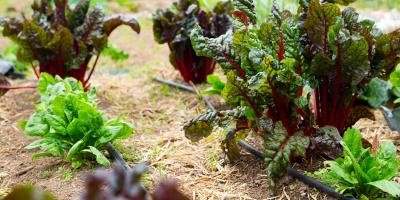Planning Ahead for 2023 Gardening

Planning Ahead for 2023 Gardening
Despite the lovely rains in early October, the wettest August in the past 128 years, and the wettest year to date in 218 years, NM continues to be classified as being in a drought. Sandoval county overall is classified as D2 – Severe Drought.
Rather than hoping we get enough rain to pull us out of the drought it would be more effective to learn all we can about how to garden in drought conditions. Statistics from https://www.drought.gov/states/new-mexico
As you contemplate your 2022 harvest you might be ready to make some changes to your garden and your processes to increase the 2023 yields. Make notes in your garden journal to help you remember when it comes time to prepare, layout and plant our 2023 garden. Our gardening friends at South Dakota State University shared some ideas to consider. While these may not be new ideas, sometimes seeing them again can remind us of a step we haven’t taken yet.
Vegetable Gardening During a Drought
Laura Edwards – SDSU Extension State Climatologist
Plants need three essential things to grow: light from the sun, nutrients from the soil, and moisture. In a drought, getting water to plants is a priority. The following management tips will help you efficiently use water and maximize other gardening practices to achieve the goal of a healthy and productive garden.
Management Tips
- Planting time. Start planting when the ground temperature is at 55 degrees Fahrenheit. When the conditions are dry, the ground warms up faster and one can start planting sooner.
- Enclosed spaces. Planting in a space that has fencing around it has its advantages. It will block the wind and help reduce water evaporation. A raised bed is also an enclosed space. Raised beds will retain moisture better than ground level soil.
- Choosing plants. Try to find drought-resistant varieties of plants and seed. Plant “bush” cultivars of vegetables. They will save space, require less water and give you higher yields. Heirloom varieties, from the Mediterranean area, are prized for being drought tolerant. Plant water-efficient edibles, like asparagus, chard, eggplant, mustard greens, peppers and Roma tomatoes.
- Try “In block planting”, you plant or seed in a grid pattern instead of in rows. Also, try “Block” planting planting in a hexagonal pattern. You have a higher density of plants in a smaller area. This increases yield, reduces weeding and makes watering more efficient. Another alternative is “The Three Sisters” form of planting. In this technique, you plant corn, beans and squash on the same hill. The corn provides the structure for beans to climb. Beans give the soil nitrogen. Lastly, squash will provide the ground cover to cool the soil. These practices will cut down on space, weeds and save moisture in the soil.
- Mulch, Mulch, Mulch. Vegetable gardens will prefer three-to-four inches of mulch. Mulch will reduce water intake by as much as 50%. It is great for cooling the soil, reducing evaporation and keeping weeds down. It will even provide added nutrients to the soil as it breaks down.
- Watering times. Do not water during the heat of the day. The best time to water is early in the morning. Water will soak into the ground, and if plant foliage gets wet, it will dry off, helping to avoid diseases. Watering during the early evening is the second best but be prepared. You are promoting the conditions for fungal diseases.
- Water efficiently. Invest in a drip system or a soaker hose. Watering this way will cut your water usage in half. Here is a tip: place the soaker hose on the ground and cover it with mulch. You are applying the water directly to the soil and the mulch will help keep moisture in the soil.
- Peak watering. Once established, plants can do well with an average amount of water. However, when the plants begin to flower, increase your watering to help set the fruit. Remember that tomatoes need consistent watering during fruiting to prevent blossom end rot.
- Add organic matter to the soil in your garden and flower beds. This will help improve the capacity of the soil to hold water during dry weather.
- Control weeds. Weeds are a nuisance. During a dry spell, they can outcompete garden plants for moisture, nutrients and sunlight. By removing them, you are helping the plant have easy access to essential elements during stressful weather conditions.
- Garden size. Consider planting less, so that way you do not over produce, have to water more often or have produce go to waste. During dry conditions, figure out how much produce you will need for your family and plant accordingly.
Garden produce is the end game in vegetable gardening. Drought conditions make this outcome harder to achieve, but it can be done and you can still feast on those delicious garden-fresh vegetables, come fall.
